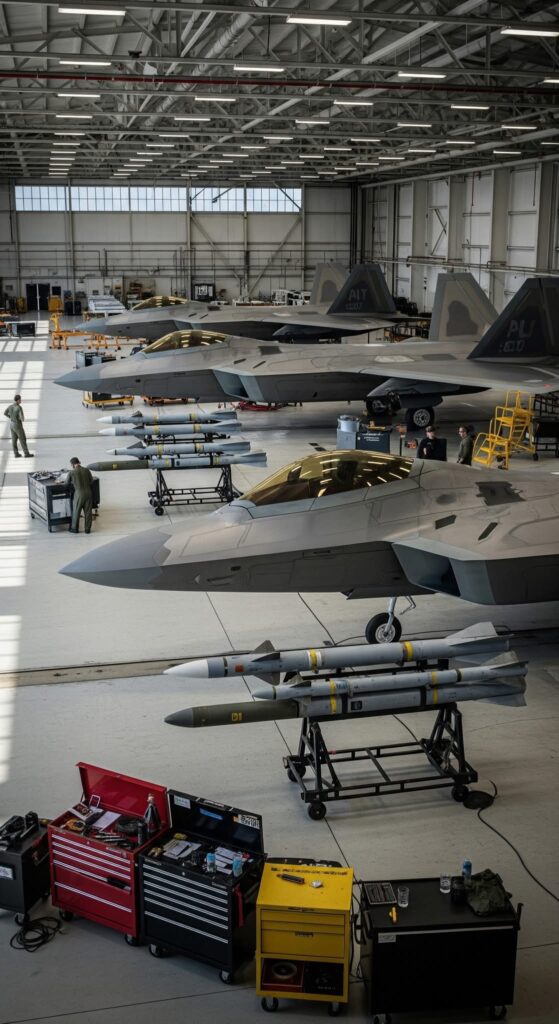
The F-22 Raptor is widely regarded as one of the most advanced fighter jets ever built. Developed by Lockheed Martin and Boeing for the United States Air Force, it was designed to achieve air dominance in any environment. Entering service in 2005, the F-22 combined stealth, speed, agility, and advanced avionics in a way no other aircraft had managed before. Even nearly two decades after its introduction, it remains a benchmark for modern air combat.
At the core of the Raptor’s reputation is its stealth technology. The aircraft was designed from the ground up to minimize radar cross-section, using specialized materials, angled surfaces, and internal weapons bays to avoid detection. Unlike older fighters that carried weapons on external pylons, the F-22 tucks its missiles and bombs inside the fuselage, preserving its low visibility. This allows it to engage targets while remaining difficult to track, giving pilots a decisive edge in contested airspace.
Performance is another area where the F-22 excels. Powered by two Pratt & Whitney F119 engines, the jet is capable of “supercruise,” meaning it can fly at supersonic speeds without using fuel-hungry afterburners. This gives it both speed and endurance advantages over rivals. The thrust vectoring nozzles on its engines also allow for extreme maneuverability, enabling the Raptor to outmaneuver opponents in dogfights. Pilots often describe the aircraft as responsive and smooth, even when executing sharp turns at high speeds.
The avionics and sensor systems of the F-22 are equally impressive. Its radar and electronic warfare capabilities allow it to detect, track, and engage multiple targets simultaneously. The cockpit layout was designed with pilot workload in mind, integrating information into a clear and manageable display. This situational awareness ensures that Raptor pilots are rarely caught off guard, maintaining control in complex combat situations.
In combat roles, the F-22 is primarily an air superiority fighter, tasked with defeating enemy aircraft before they can threaten U.S. or allied forces. However, its capabilities extend further. The aircraft can carry precision-guided munitions for ground attack missions and can operate in intelligence, surveillance, and reconnaissance roles as well. Its versatility makes it a valuable asset in modern air campaigns.
Despite its groundbreaking features, the F-22 program faced challenges. High development and production costs led to the decision to halt production after just 187 operational aircraft were built. Advances in newer platforms, like the F-35 Lightning II, also shifted focus toward multirole aircraft that could be produced in larger numbers and shared across allied nations. Still, the F-22 remains unmatched in certain areas of performance and continues to be a critical tool for the U.S. Air Force.
In summary, the F-22 Raptor represents a pinnacle of aviation engineering. With its unmatched combination of stealth, speed, agility, and situational awareness, it set the standard for fifth-generation fighters. Although its production run was limited, the aircraft continues to play a central role in ensuring air superiority for the United States, embodying the cutting edge of military aviation.


